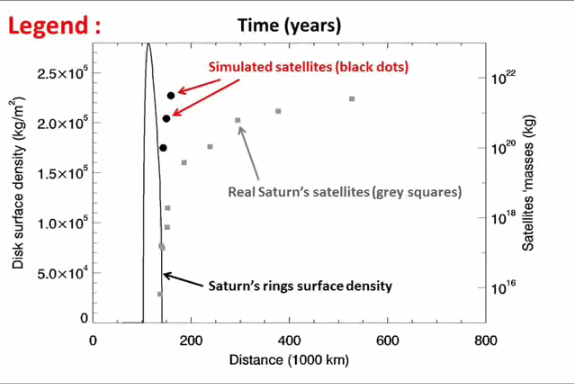Two scientists from the Université Nice Sophia Antipolis - Observatoire de la Côte d’Azur and from the Université Paris Diderot and CEA, have just proposed the first model to explain the origin of most of the regular satellites in our solar system. First proposed in 2010 to explain the repartition of the moons around the planet Saturn, this model is now extended to reproduce the distribution of the numerous satellites around the other giant gazeous planets (Jupiter, Neptune,…) and could as well explain the formation of satellites around the "rocky planets (Earth, Pluton,…). For all these planets, their moons may have formed from rings of matter that do not exist anymore today. These results are crucial to understand the universal laws that lead to the apparition of moons around planets. They are published in the last issue of the Science magazine (30 Novembre 2012).
See also :
 |
28 novembre 2012
|
Read more in
 |
Les lunes naissent dans les anneaux » Les anneaux planétaires seraient à l’origine des satellites du système solaire »
28 novembre 2012 (in French)
|
Contact : Sébastien CHARNOZ
see - the CEA press release (28 Novembre 2012,in French)
see also : Le ballet des lunes de Saturne révèle l'intérieur de la planète (2 Septembre 2012)
L'origine des lunes glacées de Saturne enfin dévoilée (21 Decembre 2011)
Le secret des anneaux de Saturne (30 June 2010)
Publication :
"Formation of Regular Satellites from Ancient Massive Rings in the Solar System"
Aurélien Crida and Sébastien Charnoz in Science, vol 338, n° 6111, p. 1196, 30 novembre 2012 (see the paper  PDF (0.4Mo) )
PDF (0.4Mo) )
see also: the animation of the formation of Saturn's moons
• Structure and evolution of the Universe › Planets, star's formation and dynamics, interstellar medium Structure and evolution of celestial bodies
• The Astrophysics Division (DAp)
